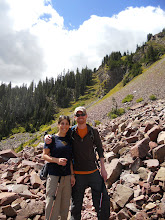Since I started the blog discussing active learning and opening techniques, I figured it may be nice to comment on some of the ways to close a lesson. Everyone has heard the importance of closing a lesson and it just drives me wild when the bell rings and a teacher hasn't taken the time to re-group and discuss with students what the day/concept was all about. I mean, we want them to walk away with something, right?? I feel with some of the strategies listed below, we can give the kids an opportunity to reflect on their learning that took place.
1. Using the mnemonic S.T.O.P. This is pretty self explanatory. On a notecard, students write:
S- We STARTED the lesson....
T- The TOPIC or(theme) was....
O- Our opportunities to practice were.....
P- The purpose of learning this is.....
2. If you started your lesson with a KWL or anticipation guide, come back to the "L" section and have the kids write everything they learned about that particular lesson. With the anticipation guide, have them refer to the "after" section and re-examine the questions they answered from the beginning of class.
3. Another technique that is similar to S.T.O.P. is 3.2.1. With this strategy, give each kid a post it, notecard, scrap paper, etc. Have them write 3 things they found interesting from the lesson, 2 things they learned and then for one, students will write one question they still have. (You can actually use those questions for a fishbowl activity the following day.)
4. Give each student a sticky note and have them solve an example problem on the lesson and slap the stick on the graffiti wall, if you have one in your classroom. If not, have them place the stickys on the board or the door.
5. Have students find the main idea or summarize the lesson. You can use graphic organizers to do this or create a cloze procedure for the kids to fill in. For example:
In Chapter ________________, on page ____________ we studied ____________. First, you start by _______________________________________________. Then, _____________________________________. Finally, __________________________________________________________________________.
6. Allow students to reflect in journals what they are learning about and what still confuses them.
Subscribe to:
Post Comments (Atom)

No comments:
Post a Comment